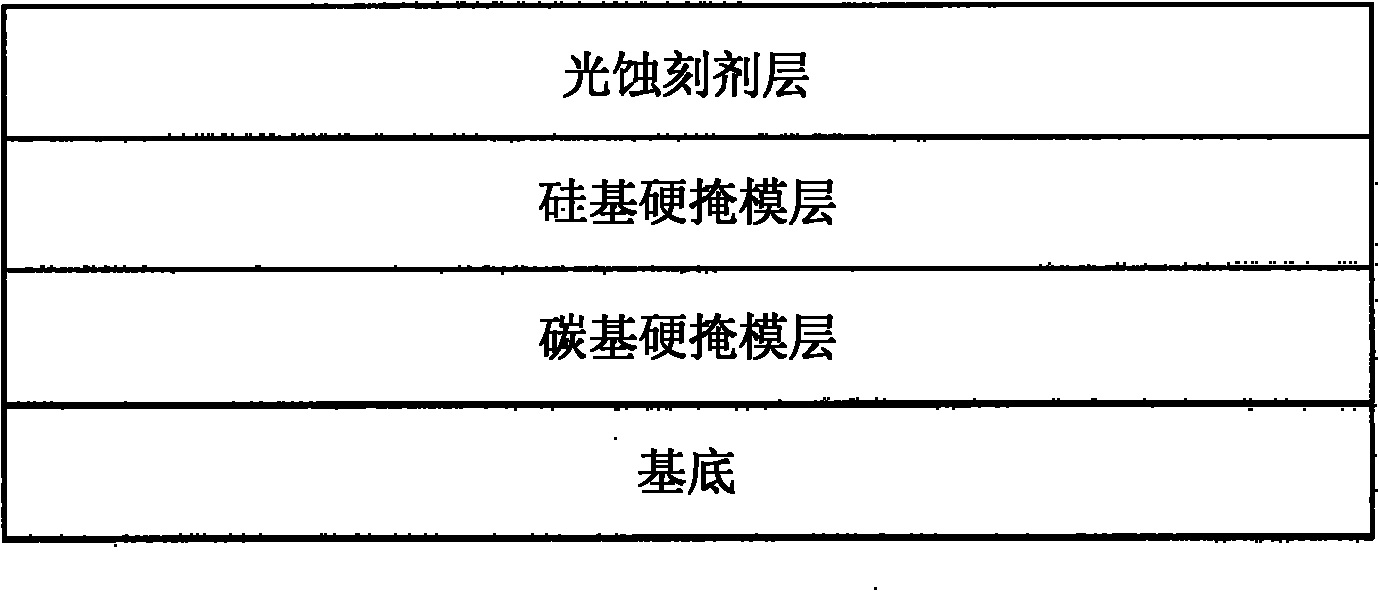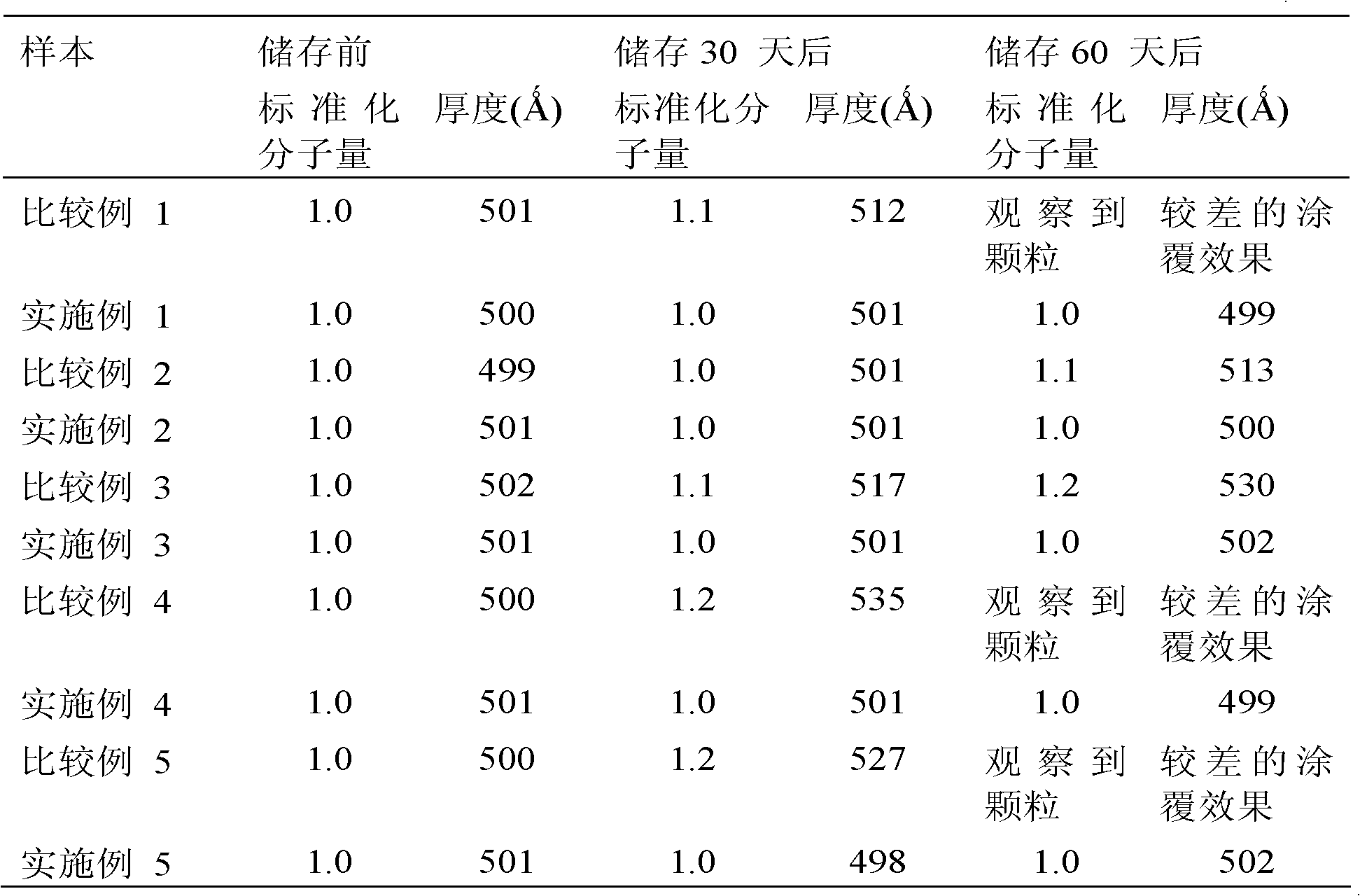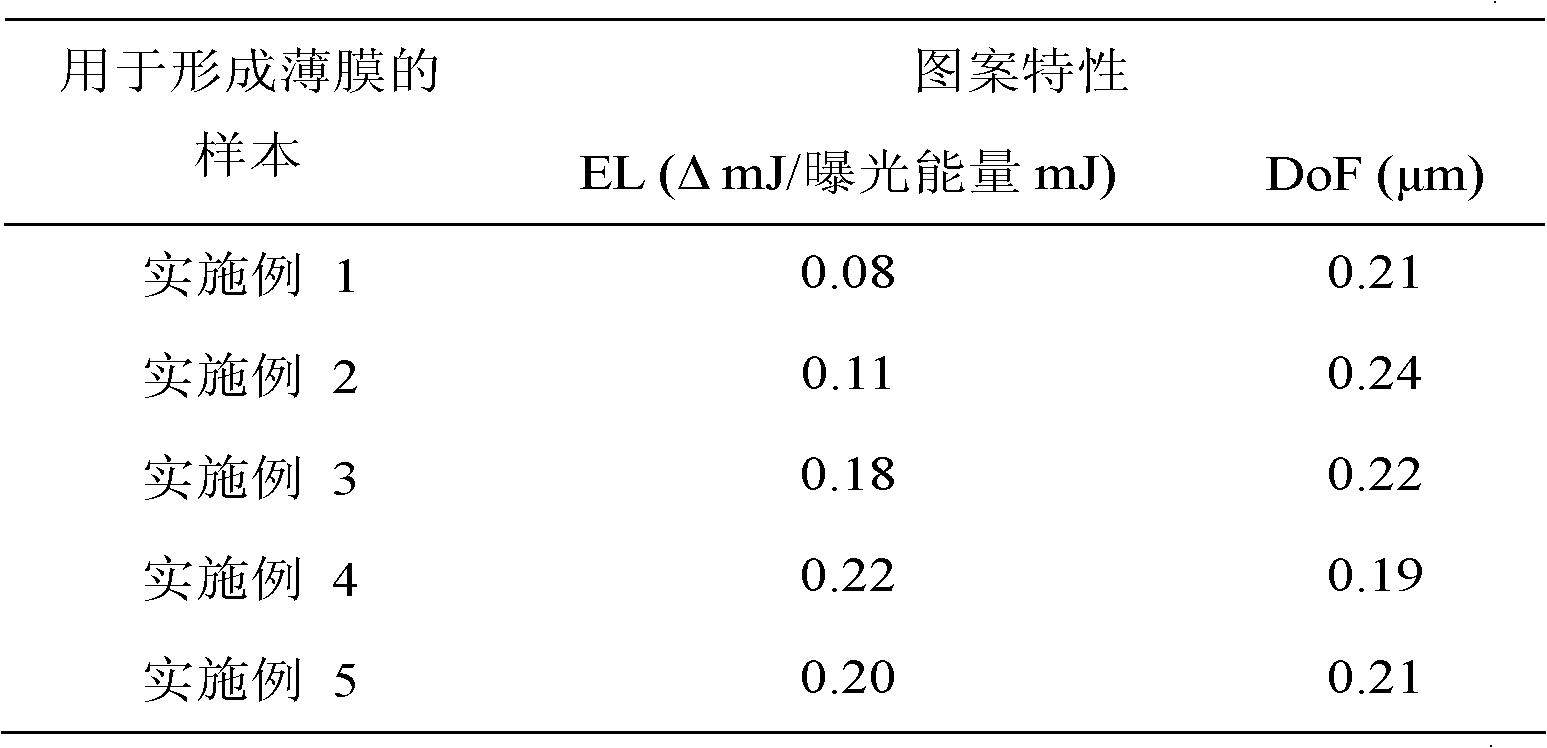Hardmask composition with improved storage stability for forming resist underlayer film
A kind of hard mask and composition technology, applied in the direction of coating, pattern surface photoengraving process, instruments, etc., can solve the problem of being difficult to be used to synthesize polymers, etc., and achieve the effect of excellent coating characteristics
- Summary
- Abstract
- Description
- Claims
- Application Information
AI Technical Summary
Problems solved by technology
Method used
Image
Examples
Embodiment 1
[0092] 1,750 g of methyltrimethoxysilane, 340 g of phenyltrimethoxysilane, and 313 g of trimethoxysilane were dissolved in a 10-liter four-wheel tank equipped with a mechanical stirrer, a condenser, a dropping funnel, and a nitrogen inlet tube. 5,600 g of propylene glycol monomethyl ether acetate (PGMEA) in a flask. 925 g of aqueous nitric acid (1,000 ppm) was added to the solution. After allowing the mixture to react at 60° C. for 1 hour, methanol was removed from the reaction mixture under reduced pressure. The reaction was continued for 1 week maintaining the reaction temperature at 50°C. After the reaction was completed, hexane was added to the reaction mixture to precipitate a polymer.
[0093] 2.0 g of this polymer was diluted with 100 g of MIBK, and 0.002 g of pyridinium p-toluenesulfonate and 0.02 g of acetic anhydride were added thereto. The resulting solution was spin-coated onto a silicon wafer coated with silicon nitride and a carbon-based hardmask, followed by ...
Embodiment 2
[0095] 49.3g of methyltrimethoxysilane, 43.9g of phenyltrimethoxysilane, and 306.8g of 1,2-bis(triethoxysilyl)ethane were dissolved in a condensing 1,600 g of propylene glycol monomethyl ether acetate (PGMEA) in a 3-liter four-necked flask with a dropper, dropping funnel, and nitrogen inlet line. 131.3 g of an aqueous nitric acid solution (1,000 ppm) was added to the solution. After allowing the mixture to react at room temperature for 1 hour, alcohol was removed from the reaction mixture under reduced pressure. The reaction was continued for 1 week maintaining the reaction temperature at 50°C. After the reaction was completed, hexane was added to the reaction mixture to precipitate a polymer.
[0096] 2.0 g of this polymer was diluted with 100 g of MIBK, and 0.002 g of pyridinium p-toluenesulfonate and 10 g of propylene glycol propyl ether were added thereto. The resulting solution was spin-coated onto a silicon wafer coated with silicon nitride and a carbon-based hardmask...
Embodiment 3
[0098] With 220.1g of methyltrimethoxysilane, 68.0g of phenyltrimethoxysilane, and 612.0g of tetraethyl orthosilicate, dissolve in a tank equipped with a mechanical stirrer, condenser, dropping funnel and nitrogen inlet tube 2,100 g of propylene glycol monomethyl ether acetate (PGMEA) in a 5 L four-necked flask. 222.3 g of aqueous nitric acid solution (1,000 ppm) were added to the solution. After allowing the mixture to react at room temperature for 5 hours, alcohol was removed from the reaction mixture under reduced pressure. The reaction was continued for 1 week maintaining the reaction temperature at 50°C. After the reaction was completed, hexane was added to the reaction mixture to precipitate a polymer.
[0099] 2.0 g of this polymer was diluted with 100 g of MIBK, and 0.002 g of pyridinium p-toluenesulfonate and 0.02 g of phenyltrimethoxysilane were added thereto. The resulting solution was spin-coated onto a silicon wafer coated with silicon nitride and a carbon-base...
PUM
 Login to View More
Login to View More Abstract
Description
Claims
Application Information
 Login to View More
Login to View More - R&D
- Intellectual Property
- Life Sciences
- Materials
- Tech Scout
- Unparalleled Data Quality
- Higher Quality Content
- 60% Fewer Hallucinations
Browse by: Latest US Patents, China's latest patents, Technical Efficacy Thesaurus, Application Domain, Technology Topic, Popular Technical Reports.
© 2025 PatSnap. All rights reserved.Legal|Privacy policy|Modern Slavery Act Transparency Statement|Sitemap|About US| Contact US: help@patsnap.com



